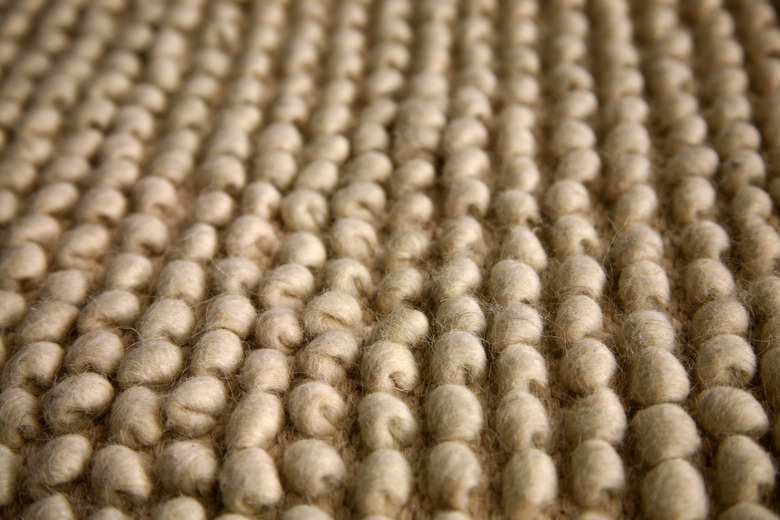What Kind Of Carpet Padding For Concrete Floors?
The type of padding you select for a concrete floor is perhaps even more important than the type you use in rooms upstairs. Concrete is usually used as the subfloor for basements in homes, and since most basements are below ground level, this makes them prone to dampness. Spend time to select padding that's appropriate for installing on concrete to protect your carpeting and help it last as long as possible.
Frothed Foam
Frothed Foam
Frothed foam padding is a good choice to use on concrete floors, because it responds well in heavy-traffic areas. This can be a plus for carpeting a family room or recreation room that has a concrete subfloor. Frothed foam is densely packed and will adhere well to the concrete and the carpet backing. It will also reduce the pressure on the carpeting from heavy furniture, such as a pool table.
Slab Rubber
Slab Rubber
Slab rubber is another good padding choice for concrete subfloors. Unlike waffle foam that has a wavy pattern, slab rubber has an even pattern that works better in high-traffic areas like basements. Slab rubber is also a good choice if you are considering installing radiant or hydronic floor heating on the concrete subfloors in your basement to offset chills and keep your basement warm and cozy.
Fiber
Fiber
Fiber padding works well if you're installing a carpet with large loops or patterns, such as a Berber carpet, on concrete. Fiber padding is flat and dense and keeps carpets like Berbers from being too cushiony and bouncy when you walk on them. Fiber padding is made from recycled wool and synthetic fibers such as nylon and polyester, so it's also eco-friendly and won't disintegrate if exposed to moisture. Fiber padding is sometimes referred to as felt fiber because it has a look and feel that's similar to felt. Some styles have a rubber backing, which further adds to fiber padding's advantages as a padding choice for concrete subfloors.
Moisture Barrier
Moisture Barrier
You can't go wrong installing a moisture barrier underlayment, especially if you live in a climate that gets a lot of rain or snow. Concrete absorbs and retains water, and the moisture can seep into the carpet padding and then into the carpet. Moisture barriers, as the name implies, set up a protective barrier to block moisture from reaching the pad and the carpet. They look similar to carpet padding, but they have a plastic film on the surface to block moisture.
Combo Underlayment
Combo Underlayment
Another option for padding if moisture is a big concern is to install a combo underlayment. Like all moisture barriers, a combo underlayment is installed on top of the concrete subfloor. However, with a combo underlayment, the moisture barrier is attached to the padding and serves as both a pad and a moisture barrier so you only need to install one piece. Combo underlayments are made of combustion-modified foam, which is flexible, polyurethane foam that contains fire suppressants. As a result, a combo underlayment can help protect your carpeting from fire and water damage.
